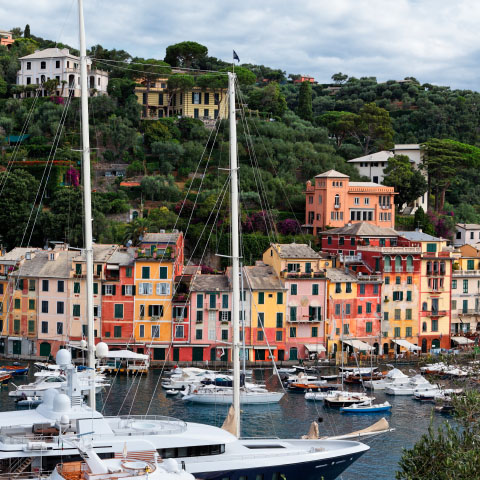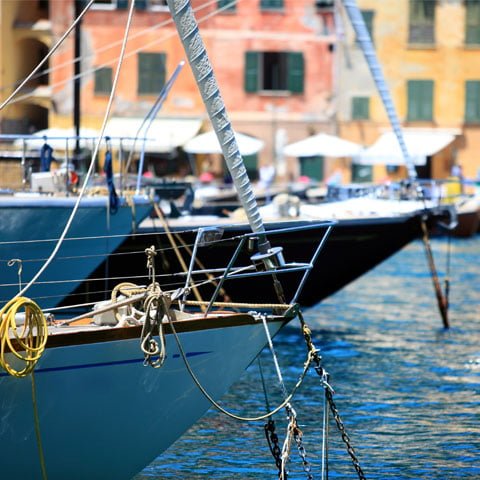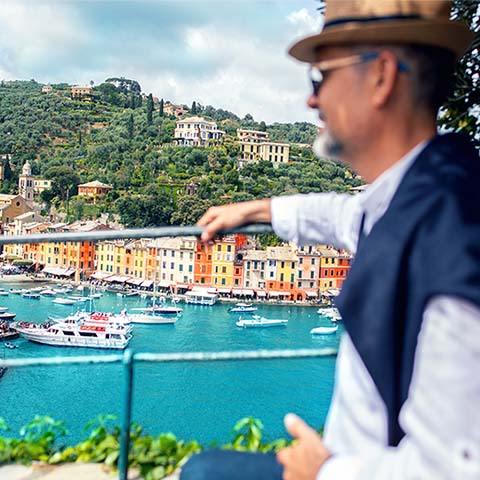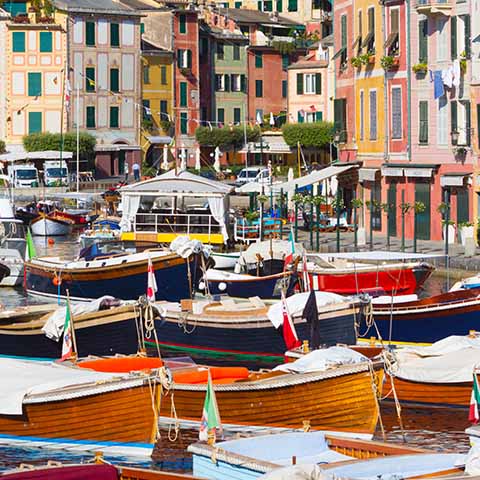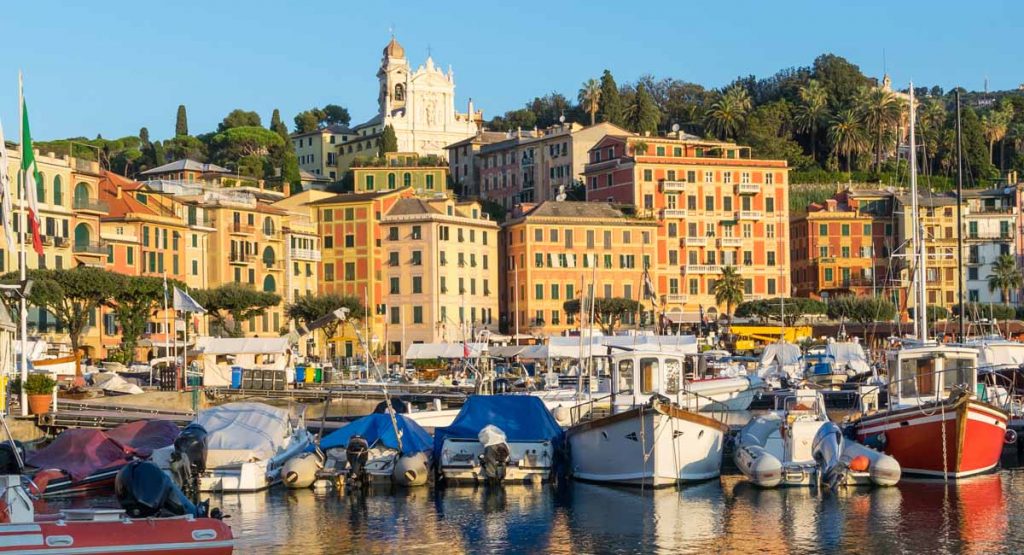On the Italian Riviera and located in the metropolitan city of Genoa rests the picturesque harbor town and commune of Portofino. Home to a population of only a few hundred permanent residents, this tiny town has made itself famous for its beautiful harbor filled with stunning, pastel-painted buildings, as well as its tendency to attract famous and artistic people.
Portofino has a long and storied history dating back to the era of the Roman Empire. In the early first century AD, Pliny the Elder dubbed the settlement “Portus Delphini,” or “Port of the Dolphin” in reference to the many dolphins that swam around the shores of the Ligurian coast.
Like many towns in Italy, Portofino changed hands several times over the centuries. In the early twelfth century, it was owned by the Bobbio Abbey of Saint Columbanus, and in the early thirteenth century it was traded to the Republic of Genoa. In the early 1400s, the town was traded to the Florentines by Charles VI of France, but eventually was returned. And in the 1500s, it was a feifdom of multiple affluent families. In the early nineteenth century it came under the dominion of the Kingdom of Sardinia, before finally becoming a part of the Kingdom of Italy during the Italian Unification in 1861.
In the late nineteenth century, Portofino became a premiere tourist destination to the rich and famous of Victorian England, and eventually other aristocratic travelers of Northern Europe. It became trendy for foreign visitors to build vacation homes in the town, and eventually tourism would replace fishing as Portofino’s primary industry.
Portofino would see yet another spike in activity in the early-to-mid 1900s, when it was featured in multiple works of literature, music, and film. In the 1950s especially, many film directors took to using Portofino as a backdrop for their movies, and this cemented Portofino’s reputation as a glamorous destination favored by the jet set.
GEOGRAPHY AND CLIMATE
Portofino rests on the Italian Riviera, also known as the Ligurian Riviera after the region in which it’s located. This narrow strip of coastal land is nestled between the Ligurian Sea and two different mountain ranges: the Apennine Mountains and the Southwestern Alps, also known as the Maritime Alps. Located to the east of the greater metropolitan area of Genoa, Portofino rests in the part of the Italian Riviera known as the “Riviera di Levante,” or “The Coast of the Rising Sun.”
Portofino has a quintessential Mediterranean climate, with mild winters and hot summers. Separated from the rest of Northern Italy (such as the Po River Valley) by the Apennines, the Ligurian Riviera enjoys far milder weather and temperatures than other cities of similar latitudes.
Spring in Portofino is mild and warm, but can also be rainy. As the summer months approach, however, the weather gets hotter and sunnier. In autumn, the weather is mild and humid, with warm temperatures and mostly sunny days, though occasionally there are periods of increased rain and gusty winds. In the winter, the area tends to get foggy and rainy, but the temperatures remain mostly mild.
WHEN IN PORTOFINO
The most famous attraction in Portofino is the famous “Christ of the Abyss” statue in the San Fruttuoso Bay between Portofino and the town of Camogli. This sunken bronze sculpture of Jesus Christ created by artist Guido Galletti in 1954 can be viewed by renting a boat or hiring a guide before scuba diving to the location. Also in the waters around Portofino live an abundance of red coral reefs that are home to hundreds upon hundreds of species of fish and other sea life that can be viewed while diving. One excellent dive site is Isuela Rock, which is Portofino’s Marine Natural Reserve. The beauty of this area is legendary and the rock itself is home to countless examples of marine life including fish, eels, shellfish, coral, and sea sponges.
However, perhaps the best thing one can do when visiting Portofino is simply relax. Portofino is not as much a town one finds things to do in, as it is a place to sit by the picturesque harbor with a drink in hand and let one’s troubles slip away. Travelers can find any number of great eateries and boutiques of all sorts in the town’s famous piazzetta, located in a small nook just off the coast.
Shopping is popular in Portofino, especially for people who are into fashion. The number of high-end boutiques one can find while exploring the streets is simply staggering, including such well-known brands as Armani, Gucci, Emilio Pucci, Ferragamo and Zegna. There are also many local boutiques that sell unique accessories and jewelry.
Of course, it is not all shopping and relaxation. For those that wish to see the sights, Portofino has plenty to offer. Portofino’s famous lighthouse is especially interesting and offers spectacular views. Be sure to enjoy an aperitivo at one of the town’s charming bars. One can also visit the famous Paraggi Beach, renowned for its clear water and sandy shore, and enjoy a relaxing day out on the sand and playing in the surf. For those more interested in history, one can visit the Abbey of San Fruttuoso or the Castello Brown. And for those interested in art and architecture, one should not miss the tenth century Romanesque Church of San Martino as well as the Church of San Giorgio, which was destroyed during World War II, but was subsequently rebuilt to match its eighteenth-century appearance.
Portofino is a magical place where the beauty of the Italian Riviera comes to life. The small town offers its fair share of sightseeing, yet the true allure lies in the breathtaking scenery and relaxing atmosphere. When visiting the Liguria region, be sure to plan a day or two to immerse yourself in the captivating spirit of Portofino.
Travel Guides
The Liguria Region Of Italy
The Cities Of Liguria
